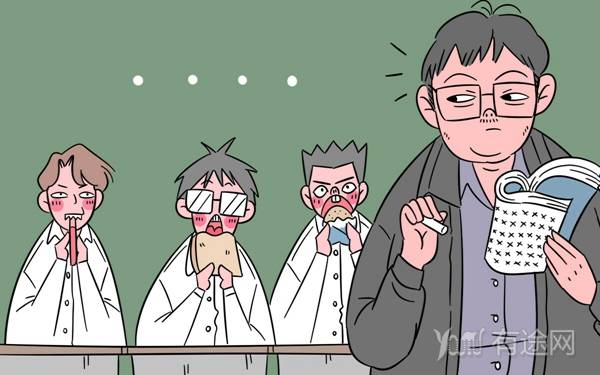四级真题:2007年6月四级阅读理解解析(组图)
2007年6月四级真题相关小知识,以下是四级真题:2007年6月四级阅读理解解析知识相关内容:
年夜教英语四六级报名、测验、查分工夫 免费短疑提示2007.6
Passage One
Questions 57 to 61 are based on the following passage.
I’ve been writing for most of my life. The book Writing Without Teachers introduced me to one distinction and one practice that has helped my writing processes tremendously. The distinction is between the creative mind and the critical mind. While you need to employ both to get to a finished result, they cannot work in parallel no matter how much we might like to think so.
Trying to criticize writing on the fly is possibly the single greatest barrier to writing that most of us encounter. If you are listening to that 5th grade English teacher correct your grammar while you are trying to capture a fleeting (电光石火的) thought, the thought will die. If you capture the fleeting thought and simply share it with the world in raw form, no one is likely to understand. You must learn to create first and then criticize if you want to make writing the tool for thinking that it is.
The practice that can help you past your learned bad habits of trying to edit as you write is what Elbow calls “free writing.” In free writing, the objective is to get words down on paper non-stop, usually for 15-20 minutes. No stopping, no going back, no criticizing. The goal is to get the words flowing. As the words begin to flow, the ideas will come from the shadows and let themselves be captured on your notepad or your screen.
Now you have raw materials that you can begin to work with using the critical mind that you’ve persuaded to sit on the side and watch quietly. Most likely, you will believe that this will take more time than you actually have and you will end up staring blankly at the pages as the deadline draws near.
Instead of staring at a blank start filling it with words no matter how bad. Halfway through you available time, stop and rework your raw writing into something closer to finished product. Move back and forth until you run out of time and the final result will most likely be far better than your current practices.
留意:此部门试题请正在问题卡2上作问。
57. When the author says the creative mind and the critical mind “cannot work in parallel” (Line 4, Para. 1) in the writing process, he means ________.
A) no one can be both creative and critical
B) they cannot be regarded as equally important
C) they are in constant conflict with each other
D) one cannot use them at the same time(D)
58. What prevents people from writing on is ________.
A) putting their ideas in raw form
B) attempting to edit as they write
C) ignoring grammatical soundness
D) trying to capture fleeting thoughts(B)
59. What is the chief objective of the first stage of writing?
A) To organize one’s thoughts logically.
B) To choose an appropriate topic.
C) To get one’s ideas down.
D) To collect raw materials.(C)
60. One common concern of writers about “free writing” is that ________.
A) it overstresses the role of the creative mind
B) it takes too much time to edit afterwards
C) it may bring about too much criticism
D) it does not help them to think clearly(B)
61. In what way does the critical mind help the writer in the writing process?
A) It refines his writing into better shape.
B) It helps him to come up with new ideas.
C) It saves the writing time available to him.
D) It allows him to sit on the side and observe.(A)
那是一篇言语较为夷易的阐明文,作者以精练、密切、对话式的言语背读者论述了本人的写作步骤。全文共五段,开篇以I’ve been writing for most of my life一句面明作者是位经历丰硕的作家,直截了当,正在读者心目中建立了威望,为后文引见的写作步骤被读者承受摊平了门路。作者随后快马加鞭提出了第一面写作步骤,The distinction is between the creative mind and the critical mind,即批驳思想取缔造思想不克不及同时共存。根据常理来说,那句话是该当取前文断开、自成一段的,本果是它取前文实践上是总分干系。不外因为文章的夷易性战忙集性,作者也就对此已做太高要求。
第两段详细阐明处理批驳思想取缔造思想的干系成绩的步骤:运用缔造思想正在前,运用批驳思想正在后:You must learn to create first and then criticize。
第三段引见了使用缔造思想的详细步骤:free writing,自在写作;第四、五段详细解说批驳思想的运用步骤。
57. D
标题问题问作者所讲的写作历程中的缔造思想取批驳思想cannot work in parallel是甚么意义。
文章的第两段阐述了缔造性思想取批驳性思想的干系成绩。从最初一句结语You must learn to create first and then criticize if you want to make writing the tool for thinking that it is可明晰天看出,正在使用那两种思想时,必需起首运用缔造性思想,然后再运用批驳性思想。意义就是两者不成同时运用。
A,一小我私家不成能既会用缔造性思想又会用批驳性思想。no one can be both creative and critical的意义是一小我私家身上差别时具有那两种思想才能,而没有是不克不及同时运用那两者。作者正在文中会商先使用缔造思想、后使用批驳思想的成绩,那么一小我私家必定是具有那两种思想才能的。A的注释不合错误。
B,两者的主要性不成混为一谈。从高低文来看,作者从已对两者孰重孰轻做出评判,而只是会商了前后成绩。
C,两者初末处于取对圆斗争抵触的形态。从文中阐述可知,只要当人们念同时运用两者时,那两者才会发作抵触,假如一前一后运用则没有会。以是其实不能道初末处于抵触形态。因而那个选项的结论没有准确。
D,一小我私家不克不及同时使用那两种思想,那一面取文中的You must learn to create first and then criticize符合。
58. B
标题问题问阻碍人们真现流利写作的是甚么?
文章第两段讲到了那个成绩。开首 The practice that can help you past your learned bad habits of trying to edit as you write is what Elbow calls “free writing.”一句详细指出了写作时的坏风俗――测验考试修正(edit),而处理法子则是free writing。后文做了两个假定,即正在念法初现的时分思索语法成绩战念法初现就没有做修正取人分享,那两种情况的成果皆不睬念。段末指出理解决计划:先没有受影响天缔造出念法,然后使用批驳思想停止修正。
A,把本初的粗拙念法拿来取人分享。文中提到putting their ideas in raw form时是要夸大念法假如没有停止修正则没有会被人了解,念法可以写下来实践上曾经是流利写作的成果了,也就没有存正在阻碍成绩。
B,正在写作时试图停止修正。The practice that can help you past your learned bad habits of trying to edit as you write,那句话指出边写边修正是写作的坏风俗,取B的道法分歧。
C,疏忽语法毛病。从第两段举出的第一个假定可知,疏忽语法毛病刚好是真现流利写作的步骤,而非阻碍果素。
D,想法捉住电光石火的念法。,文中提到correct your grammar while you are trying to capture a fleeting (电光石火的) thought, the thought will die,意义是写作时假如念要改正语法,那么念法很能够会消逝。捉住电光石火的念法实践上是写作的第一步,而修正语法是其阻碍果素。
59. C
标题问题问写作第一个步调的次要目的是甚么。
从某种角度来看,文章阐述的实在就写作的次第成绩。文章前半部门阐发了缔造性思想取攻讦性思想的干系,推出了必需先使用缔造性思想记下念法然后再使用批驳性思想停止修正的不雅面(You must learn to create first and then criticize if you want to make writing the tool for thinking that it is)。后半部门对怎样使用缔造性思想战批驳性思想停止了详细形貌。那么按照辞意,写作的第一步就是使用缔造性思想把不雅面记下来,记下来的步骤就是free writing,即念到那里就记到那里。
A, 把念法有逻辑性天构造起来。Free writing的步骤就是要把念法自在记下,而没有作修正,而要做到 “有逻辑性天”构造,隐然应是停止了修正,是批驳性思想的成果。因而A不合错误。
B, 挑选一个恰当的标题问题。全文没有提到挑选标题问题成绩。
C,记下念法,取前面的阐发分歧,是准确的。
D,搜集本初质料。文章也没有提到质料搜集成绩。
60. B
标题问题问作家们停止“自在写作”时逢到的配合成绩是甚么。文章第三段对free writing的步骤停止了详细阐明,以后两段则指出自在写作的成果是破费许多工夫来停止修正。从第四段的this will take more time than you actually have,到第四段的Move back and forth until you run out of time,写作者必需战工夫竞走,才气正在工夫用完时将文章修正终了。因而,作家们的配合成绩该当是修正工夫过紧。
A,它过于夸大缔造思想。夸大缔造思想是自在写作自己的特性,那个没有是成绩,果过于夸大而形成的修正工夫过多才是成绩。
B,用来修正的工夫过多。那一道法契合我们前面所做的阐发。
C,它会引来太多的攻讦。按照辞意,准确的道法该当是会引来太多需求使用批驳思想停止修正的处所。
D,自在写作不克不及协助作家分明天考虑。自在写作的特性是协助作家把最后最本初的念法记载下来,那一步其实不要求分明天考虑,也就不合错误作家们组成成绩。“分明天考虑”要留待第两步――批驳思想来真现。
61. A
标题问题问批驳性思想正在作家的写作历程中起到了甚么感化。相干内容正在最初两段。倒数第两段第一句Now you have raw materials that you can begin to work with using the critical mind that you’ve persuaded to sit on the side and watch quietly,指出正在得到前期材料后,便是使用批驳性思想的时分。下一段整段对怎样使用批驳性思想停止了形貌,从中能够发明批驳性思想的次要感化是对文章草稿停止修正、精辟。
A,它使文章愈加成形。也就是对文章草稿停止修正、精辟的意义,契合最初一段对批驳思想的形貌。
B,它能使作产业死新的念法。按照辞意,批驳思想是对现有念法的修正,没有会发生新的念法。
C,它能够节流作者的写作工夫。倒数第两段提到this will take more time than you actually have,意义是正在使用批驳思想前很能够会发明工夫不敷用,那么批驳思想有无节流工夫呢?从“Move back and forth until you run out of time……”那最初一句话能够看出,即使使用批驳性思想,借是把一切的工夫皆用光了。因而并没有节流工夫。
D,它可以使作者坐下来审阅文章。坐下来审阅文章的意义就是使用批驳性思想自己,不克不及道自己会对自己起到甚么感化。
四级实题――2002年6月四级浏览了解剖析
2012年6月考CET-4保425分签约班:面击免费进修《《
更多疑息请会见:举世英语网校首页 年夜教英语四六级频讲 英语网校论坛
1 2 3 4
以上四级真题:2007年6月四级阅读理解解析相关所有内容(含图片)均来源于网络,版权归2007年6月四级真题原作者所有,如有不妥请联系站长删除



![四级报了名可以退吗?[多图]](http://img.ccutu.com/upload/202010/20201025112529607.jpg)
